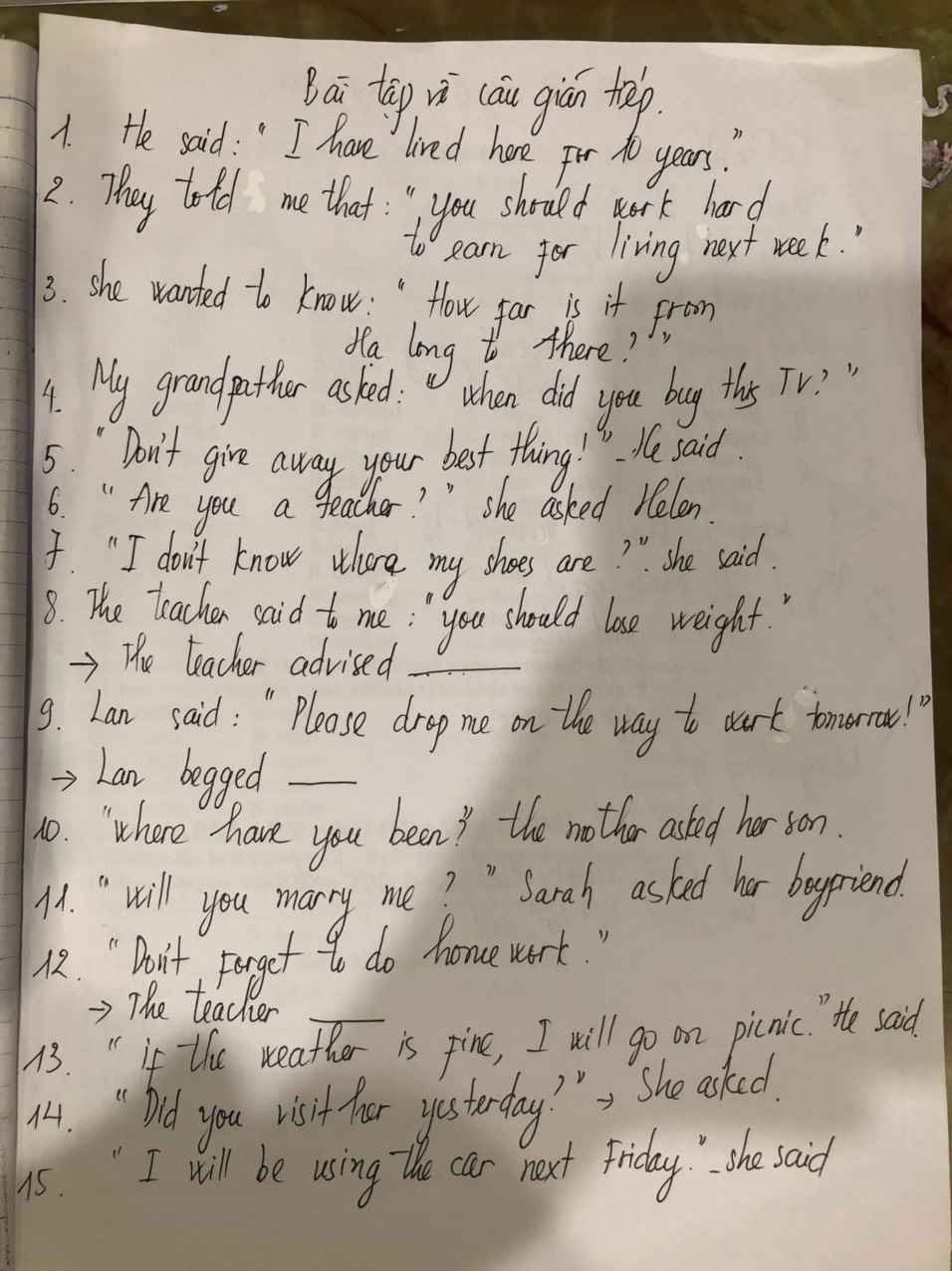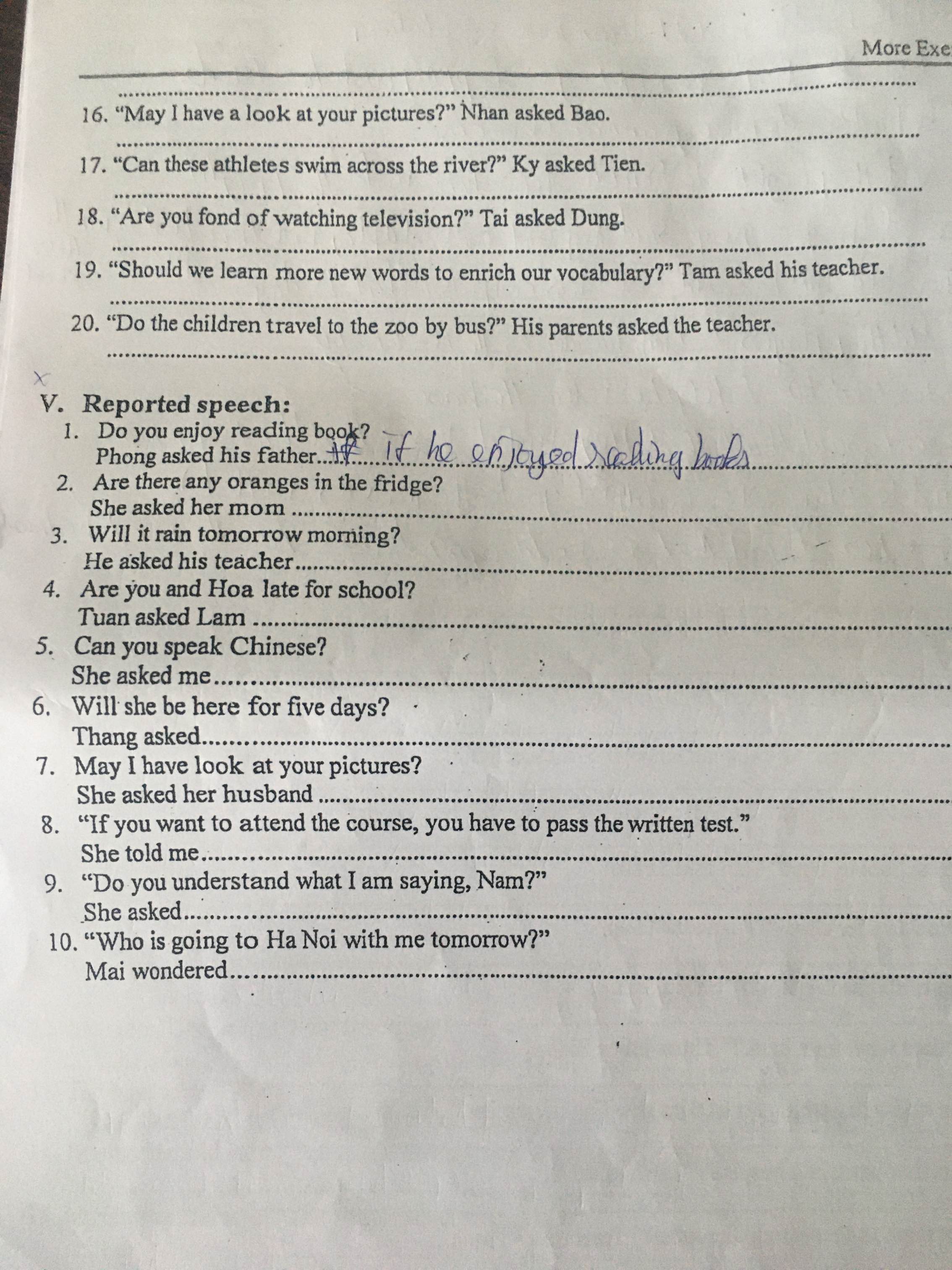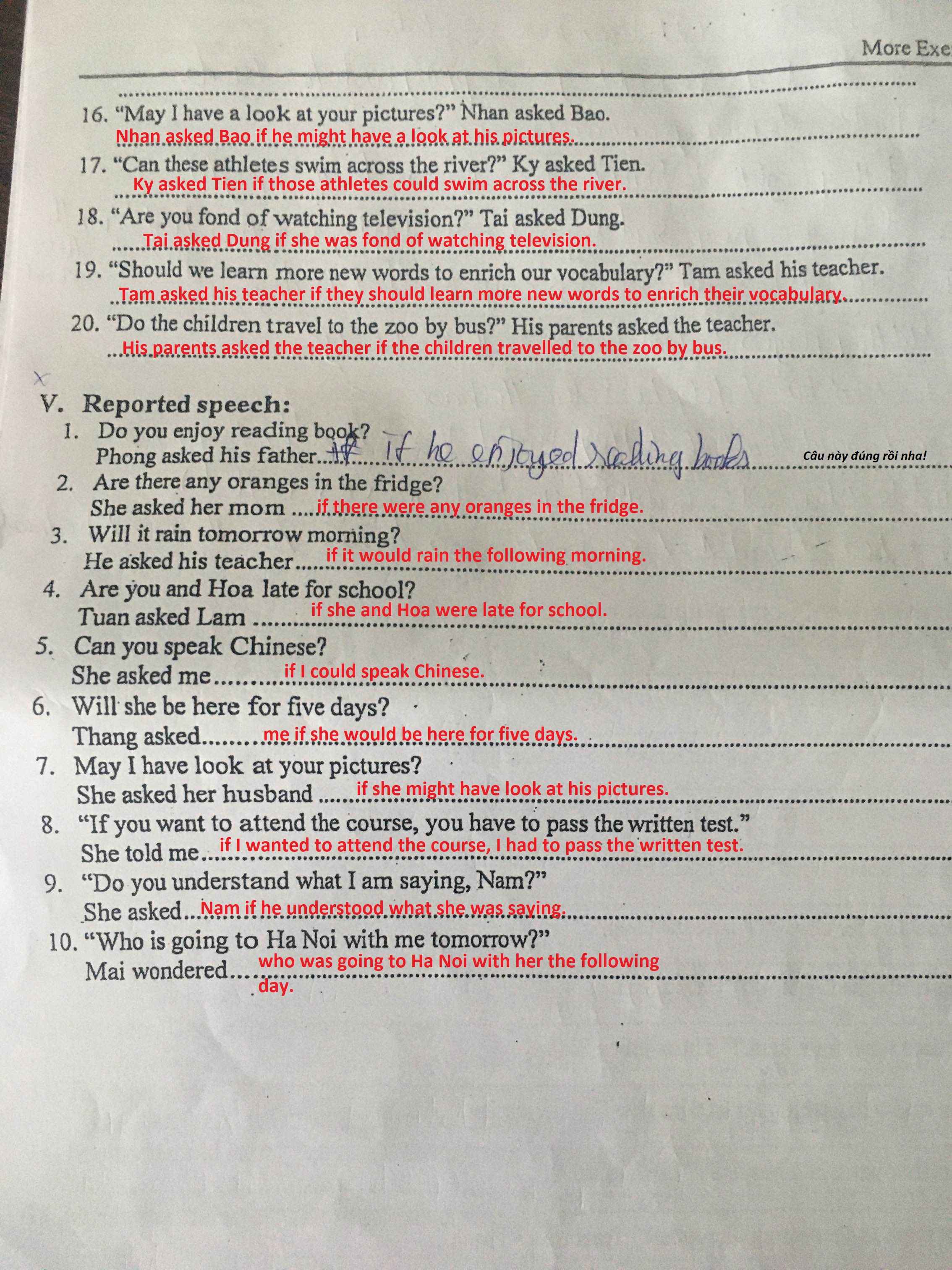Hãy nhập câu hỏi của bạn vào đây, nếu là tài khoản VIP, bạn sẽ được ưu tiên trả lời.

The Tay, with local groups Pa dí, Thổ, Ngan, Phén, Thu Lao, is an ethnic group of 54 ethnic groups in Viet Nam. Tay people speak Tay, a Tai dialect of the Tai-Kadai language. Tay people live mainly in lowland areas of northern Vietnam. The Tay was previously known as the Tho (although this name is now used to refer to a different ethnic group, see Turks). Tay people have the second largest population in Vietnam. Tay people, Nung have a close relationship with the Choang people in China.Tay people mainly reside in the northern midland and mountainous provinces (1,400,519 people in 1999). In addition, in the recent time, the Tay also migrated to some provinces in the Central Highlands like Dak Lak and Lam Dong.The Tay are usually at the foot of the mountain or along the stream. The name is often referred to by the name of hills, fields, rivers. Each village has 15 to 20 houses. Large villages divided into many small villages.Tay dressed in indigo. Traditional Tay costumes are made from self-made cotton yarn, dyed indigo on men's and women's clothes, almost without decorative pattern. Tay clothing can be considered one of the simplest outfits of 54 ethnic groups. The costume is simple but meaningful.Then singing, singing, singing sli are used in various activities, popular folk songs of the Tay. Musical instruments such as the Micro, Shake. Chess is an instrument that is present in all spiritual activities of the Tay, such as soul in the folk dance of the Tay. In this life, the sex acts as a means of communicating bold identity.Traditional houses are usually on stilts, lands and roofs with grass and some border areas have defense types. In the house to distinguish male rooms outside, women in the chamber. Most popular are 3-room, 2-roofed houses (no chop), logs of land or bushes, surrounding woods, roofs of grass, picturesque Tay people settle in groups of about 15 to 20 households. Tay people worship ancestors and animals. The Tay ancestors' altar is placed in the middle of the house and made into a private space and revered. Pregnant women and their newborns are not allowed to sit or lie on chairs or beds in front of the altar. In the Tay religion, the most important feast day of the Tay people is usually the last day of the lunar month.The life of the Tay is often associated with nature, so the food and foodstuff of the Tay people are products obtained from production activities in areas with forests, rivers, streams and hills surrounding. Some famous dishes are: sticky egg rolls, sticky rice balls, sour bamboo shoots, stigma.
The Tay, with local groups Pa dí, Thổ, Ngan, Phén, Thu Lao, is an ethnic group of 54 ethnic groups in Viet Nam. Tay people speak Tay, a Tai dialect of the Tai-Kadai language. Tay people live mainly in lowland areas of northern Vietnam. The Tay was previously known as the Tho (although this name is now used to refer to a different ethnic group, see Turks). Tay people have the second largest population in Vietnam. Tay people, Nung have a close relationship with the Choang people in China.Tay people mainly reside in the northern midland and mountainous provinces (1,400,519 people in 1999). In addition, in the recent time, the Tay also migrated to some provinces in the Central Highlands like Dak Lak and Lam Dong.The Tay are usually at the foot of the mountain or along the stream. The name is often referred to by the name of hills, fields, rivers. Each village has 15 to 20 houses. Large villages divided into many small villages.Tay dressed in indigo. Traditional Tay costumes are made from self-made cotton yarn, dyed indigo on men's and women's clothes, almost without decorative pattern. Tay clothing can be considered one of the simplest outfits of 54 ethnic groups. The costume is simple but meaningful.Then singing, singing, singing sli are used in various activities, popular folk songs of the Tay. Musical instruments such as the Micro, Shake. Chess is an instrument that is present in all spiritual activities of the Tay, such as soul in the folk dance of the Tay. In this life, the sex acts as a means of communicating bold identity.Traditional houses are usually on stilts, lands and roofs with grass and some border areas have defense types. In the house to distinguish male rooms outside, women in the chamber. Most popular are 3-room, 2-roofed houses (no chop), logs of land or bushes, surrounding woods, roofs of grass, picturesque Tay people settle in groups of about 15 to 20 households. Tay people worship ancestors and animals. The Tay ancestors' altar is placed in the middle of the house and made into a private space and revered. Pregnant women and their newborns are not allowed to sit or lie on chairs or beds in front of the altar. In the Tay religion, the most important feast day of the Tay people is usually the last day of the lunar month.The life of the Tay is often associated with nature, so the food and foodstuff of the Tay people are products obtained from production activities in areas with forests, rivers, streams and hills surrounding. Some famous dishes are: sticky egg rolls, sticky rice balls, sour bamboo shoots, stigma.
THAM KHẢO


Tham khảo nha bn:
I think the best recreational activity for teenagers is playing sports. First, they can find friends with similar interests. Second, physical activity is a good way to reduce stress and reduce depression. Furthermore, sport can help develop teamwork and leadership skills that may be necessary for their future jobs. Their parents should offer advice on choosing an appropriate recreational activity; However, it is the youth who make the final decision.

Em thấy một số bài nghe của cô em lấy trên MerlineEnglish. Hôm kiểm tra Sở Giáo Dục cx cho đề ở đó lun![]()
mua đĩa tiếng anh lớp 9 zề hc. nghe cái đó khó lém ak, mún hc tiêng anh tốt thì phải thế ms có hịu quả







a,
+CĐ: S (People, They,…..) + say/think/believe…+ that +………
-BĐ: S + is/am/are + said/thought/believed…+ to V…………
It + is/am/are + said/thought/believed… that +…………
b,
+CĐ: S (People,They,…..) + said/thought/believed…+ that….
-BĐ: S + was/were + said/thought/believed…+ to have + V(pII)
It + was/were+ said/thought/believed… that +…………
Eg: - People believe that 13 is an unlucky number.
=> 13 is belived to be an unlucky number.
=> It is believed that 13 is an unlucky number.
- They thought that Mai had gone away.
=> Mai was thought to have gone away.
=> It was thought that Mai had gone away.
2. Câu bị động với “have”:
+CĐ: S + have/has/had + sb + V + st+ …….
-BĐ: S + have/has/had + st + V(pII) + (by sb)...
Eg: I had him repair my bicycle yesterday.
=> I had my bicycle repaired yesterday.
3. Câu bị động với “get”:
+CĐ: S + get/gets/got + sb + to V + st +…….
-BĐ: S + get/gets/got + st + V(pII) + (by sb)...
Eg: I got him to repair my car last week.
=> I got my car repaired last week.
4. Câu bị động với “make”:
+CĐ: S + make/made + sb + V + st +……
-BĐ: S (sb) + is/are//was/were made + to V+ st +……
Eg: The step mother made Littele Pea do the chores all day.
=> Littele Pea was made to do the chores all day.
5. Need:
+CĐ: S + need + to V+ st +……..
-BĐ: S (st)+ need + to be V(pII).
S (st)+ need+ V-ing.
Eg: You need to cut your hair.
=>Your hair need to be cut.
=> Your hair need cutting. II. Câu trực tiếp, gián tiếp: A, Các dạng câu chuyển gián tiếp:
1. Câu mệnh lệnh, yêu cầu:
- Câu mệnh lệnh, yêu cầu có các dạng:
“(Don’t) + V +…..+ (please)”
“Will/Would/Can/Could + S + (not) +……+ (please)?”
“Would you mind + (not) + V-ing +…..?”
=>S + told/asked/warned (cảnh báo)/begged (cầu xin)/ordered (ra lệnh)/reminded (nhắc nhở)+ O
+ (not) toV…
Eg: “Listen carefully” The teacher said to us.
=>The teacher told/asked us to listen carefully.
“Don’t make noise, Jim” The perfect said.
=>The perfect ordered Jim not to make noise.
“Would you mind putting out your cigarette?”- said a woman.
=>A woman reminded me to put out my cigatette.
*Câu yêu cầu với động từ tường thuật “asked” có dạng:
“I’d like+……..”
“Can/Could I have+……..”
Khi chuyển gián tiếp ta áp dụng công thức:
S+asked(+O)+for+st+…..
Eg: In the café,the man said: “I’d like a cup of tea”.
=>The man asked for a cup of tea.
2. Lời khuyên:
- Lời khuyên có các dạng:
“S+should(not)/ought (not) to/had better(not)+V+……..”
“Why don’t you+V+…….”
“If I were you, I would+V+…….”
=>S1+said+(to+O)+that+S2+should+V+…….
=>S+advised/encouraged(khuyến khích)+ O+to V+…….
Eg: “You should run faster” The teacher said.
=>The teacher said that I should run faster.
=>The teacher advised me to run faster.
“Why don’t you take off your coat?” She said.
=>She advised me to take off my coat.
“If I were you,I would stop smoking” He said.
=>He advised me to stop smoking.
“Go on,apply for the job”Mrs.Smith said.
=> Mrs.Smith encouraged me to apply for the job”
3. Câu trần thuật:
Câu trần thuật có dạng: “S+V(s/es/ed/pI/pII)+…….”
=>S+said+that+S+V(lùi thì)+………
Eg: “I will have an important contest tomorrow.”She said.
=>She said that she would have an important contest the next day.
4. Câu hỏi:
a, Yes/No questions:
Yes/No question có dạng: “Trợ động từ+S+V+…..?”
=>S1+asked+O+if/whether+S2(O)+V(lùi thì)+……
Eg: “Do you like SNSD?” Seohyun said to Kyuhyun.
=> Seohyun asked Kyuhyun if/whether he liked SNSD.
b, Wh questions:
Wh questions có dạng: “Wh+trợ động từ+S+V+…..?”
=>S1+asked+O+Wh+S2(O)+V(lùi thì)+…….
Eg: “Where will you go tomorrow?” She said.
=>She asked me Where I would go the next day.
5. Lời mời, gợi ý:
a, Lời mời:
Lời mời có dạng: “Would you like+Noun/toV+……?”
=>S+invited+O+toV+……
Eg: “Would you like to come to my birthday party”Su said to Seohyun.
=> Su invited Seohyun to come to his birthday party.
b, Lời gợi ý:
Lời gợi ý có dạng:
“Let’s+V+…..!”= “Shall we+V+…..?”
“What/How about + V-ing/N +……?”
“Why don’t we/you+ V+….?”
* Nếu chủ ngữ tham gia vào hành động.( “Let’s + V +…..!” ; “Shall we + V +…..?” ;
“What/How about + V-ing/N +……?” “Why don’t we +V+….?”):
=>S + suggested + V-ing +……
* Nếu chủ ngữ không tham gia vào hành động mà chỉ gợi ý cho người khác.( “Why don’t
you+V+….?”)
=>S1 + suggested + that + S2 + should + V +……
Eg: “Let’s go to the movies” The boy said.
=>The boy suggested going to the movies.
“Why don’t you go out for a drink?” Trung said to Nga.
=>Trung suggested that Nga should go out for a drink.
c, Những câu có dạng:
“I’ll+V+…..+if you like.”
“Shall/Can/Could I+V+….?”
“Would you like me+toV+…..?”
Khi chuyển gián tiếp ta sử dụng động từ tường thuật “offered” công thức:
S+ offered + toV +…….+ if you like.
Eg: “Would you like me to finish the work tonight?
=>I’ll finish the work tonight if you like.
=>I offered to finish the work tonight if you like.
“I’ll do your housework for you if you like” She said.
=>She offered to do my housework for me if I liked.
6. Câu cảm thán:
- Câu cảm thán có dạng:
“What + (a/an) + adj + Noun!”
“How + adj + S + V!”
=>S1+exclaimed+that+S2+V/be(lùi thì)+……..
Eg: “What a lovely teddy bear!” The girl said.
= “How lovely the teddy bear is! The girl said.
=>The girl exclaimed that the teddy bear was lovely.
7. Lời nhắc nhở:
“Remember…” Khi chuyển sang gián tiếp ta áp dụng cấu trúc sau:
“Don’t forget…” S + reminded+ sb+ toV+….
Eg: She said to me; “Don’t forget to ring me up tomorrow evening”
=> She reminded me to ring her up the next eveining.
8. Sự đồng ý về quan điểm như: all right, yes, of course (áp dụng cấu trúc sau):
S + agreed + to V…
Eg: “All right, I’ll wait for you” He said.
=> He agreed to wait for me.
9. Câu trực tiếp diễn tả điều mong muốn như: would like, wish. Khi chuyển gián tiếp áp dụng cấu trúc:
S + wanted + O + to V+…
Eg: “I’d like Trung to be a famous person.”Trung’s English teacher.
=> Trung’s English teacher wanted him to be a famous person.
10. Từ chối:
S + refused + to V +…
Eg: ‘No, I won’t lend you my car”
=> He refused to lend me his car.
11. Lời hứa:
S + promised to V+…..
Eg: ‘I’ll send you a card on your birthday”
=> He promised to send me a card on my birthday.
12. Cảm ơn, xin lỗi:
a, Cảm ơn: S + thanked (+O) (for+V-ing/st) +…..
Eg: “It was nice of you to help me. Thank you very much,” Tom said to you.
=>Tom thanked me for helping him.
b, Xin lỗi: S+ apologized (+to O) + for (+not) + (V-ing/st) +…….
Eg: “I’m sorry I’m late,” Peter said.
=>Peter apologized for being late.
13. Chúc mừng:
S + congratulated + O + on + V-ing/st+……
Eg: John said, “I heard you received the scholarship. Congratulations!”
=> John congratulated me on receiving the scholarship.
14. Mơ ước:
S + dreamed + of + V-ing/st+..…
Eg: “I want to pass the exam with flying colours,” John said.
=> John dreamed of passing the exam with flying colours.
“I’ve always wante to be rich, ” Bob said .
=> Bob had always dreamed of being rich.
15. Một số câu cần nhớ:
- She said, "Curse(nguyền rủa) this dog!" =>She cursed the dog.
- She said, "Luck!" => She wished me luck.
- She said, "Thank you very much!" => She thanked me very much.
- She said, "Congratulations!" => She congratulated me.
- She said, "Traitor(kẻ phản bội)/Liar(kẻ dối trá)!" => She called me a traitor/liar.
- She said, "Happy Christmas!" => She wished me a happy Christmas.
- She said, "Hell!(chết tiệt)" => She swore(chửi rủa).
- The notice said: "Welcome to Edinburgh" => The notice welcomed visitors to Edinburgh.
- "Good!" he exclaimed => He gave an exclamation of pleasure/satisfaction.
- “Ugh(Ối;Eo ơi)!" she exclaimed, and turned the programme off => With an exclamation of disgust(làm phẫn nộ) she turned the programme off.
- “Hello John”She said. => She greeted John.
16. Các hình thức hỗn hợp trong lời nói gián tiếp: (mixed forms in reported speech)
Lời nói trực tiếp có thể bao gồm nhiều hình thức hỗn hợp: câu khẳng định, câu hỏi, câu mệnh lệnh, câu cảm thán:
Eg:
1. He said, “Can you play the guitar?” and I said “No”
He asked me if I could play the guitar and I said that I couldn’t.
2. “I don’t know the way. Do you? He asked.
He said that he didn’t know the way and asked her if she knew it.
3. “I’m going to shopping. Can I get you something? She said
She said that she was going to shopping and asked if she could get me anything.
4. “Hello Seohyun!Where are you going now?” Su said.
Su greeted and asked Seohyun Where she was going then.